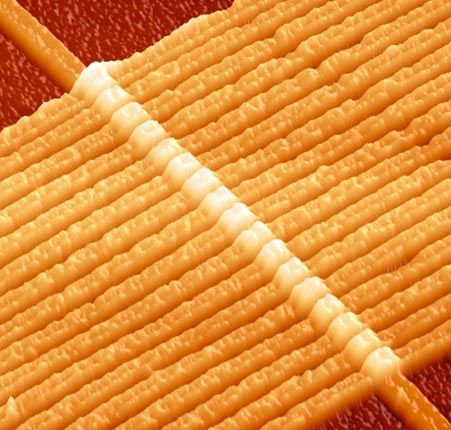How Do You Teach the Memristor?
Two years ago we said the textbooks would be changed. How’s that working out for us?
Two years ago, HP Labs’ Stan Williams and Greg Snider shocked the EE community by announcing a fourth fundamental circuit design element to join the nuclear family of resistor, capacitor and inductor.
A number of news stories, including mine, cited Leon Chua—the originator of the theory of the memristor—who told IEEE Spectrum’s intrepid reporter, “Now all the textbooks must be changed.” (Nature News also contained this assessment, along with Physics World and EE Times, in which he elaborated: “All electronic textbooks have been teaching using the wrong variables—voltage and charge—explaining away inaccuracies as anomalies. What they should have been teaching is the relationship between changes in voltage, or flux, and charge.”
So, two years on, what happened with all those EE textbooks?
Most appear untouched by the memristor’s actualization. If MIT’s Open Courseware site is any guide, Prof. Anant Agarwal’s Circuits and Electronics class makes no mention of the memristor. Nor should it—the class appears on the site as it was taught in 2007, when the memristor was still an irrelevant mathematical dalliance. At the University of California at Berkeley, instructor Josh Hug teaches an intro EE class that acknowledges the memristor in the slides that includes R, L, and C. I’m going to call that a thumbs up. At Columbia University, Prof. David Vallancourt* does not mention the memristor in his intro EE class. We’ll count that as a thumbs down.
But the 2-1 ratio revealed in my breathtakingly ad hoc survey came as no surprise to Leon Chua.
“I don’t think the memristor will be taught in undergraduate courses until it is widely adopted in industry for the simple reason that any circuit containing even only one memristor must be analyzed by nonlinear techniques,” he told me in an email. “Most professors are educated in linear theories, and are illiterate on nonlinear circuits.” As a result, he says memristor circuits will likely be taught initially by computer simulations, like SPICE, where you don’t need to know much about nonlinear circuits.
And Chua’s prediction of the changing of the textbooks still stands, albeit on a slightly longer time scale: “It will take another generation for memristors to be taught in undergraduate courses. I have no doubt however that memristor will be included as standard topics in future textbooks because memristor is not an invention—which becomes obsolete, sooner or later. Rather, memristor is a discovery, and memristive phenomena will become ubiquitous in nano-electronic circuits.”
“Columbus did not invent America,” Chua concludes. “He discovered America.”
Tinkering with memristors. Memtinkering?
“Do you think we’ll ever be able to get our hands on a memristor (in a convenient 2-lead surface mount package), or are these destined to stay in the realm of integrated devices and specialty circuits?” asked a particularly incisive poster in this ars technica forum thread the day after the memristor news broke.
“Given that the effect described here requires a nanostructure, probably not, unless someone puts a single one in a macroscale package,” replied an equally trenchant observer.
So if you can’t play with a physical memristor, you’re left with math. “If you understand the math behind memristors, you can create superior device models, such as for SPICE, which means you can design better or more realistic circuits,” elaborates Stan Williams. (Computational neuroscience blog Neurdon has a tutorial on modeling the HP memristor with SPICE.)
This kind of modeling, then, is the only access any young engineer has to “tinkering” with a memristor. But before you can adequately tinker, don’t you need to understand the math behind the memristor?
Any EE profs out there who can weigh in? Do you teach the memristor? Do you mention it as a fundamental circuit design element and then save the elaboration until finals week?
Also, given all the advances recently made with memristor logic, spintronic memristors, crossbar memory, and even their use in strong AI projects, should they be taught early on to get students amped about engineering?
* Vallancourt, the poor soul independent source I asked for comment when the story first broke, tells me, “I don’t teach the memristor at all.” However, he is haunted forever by his name in my article in an Internet that never forgets. “Ironically, students sometimes mention it to me because they have Googled me and found my brief remarks from a few years back,” Vallancourt told me. “So thanks a lot, dingbat,” he did not add.
